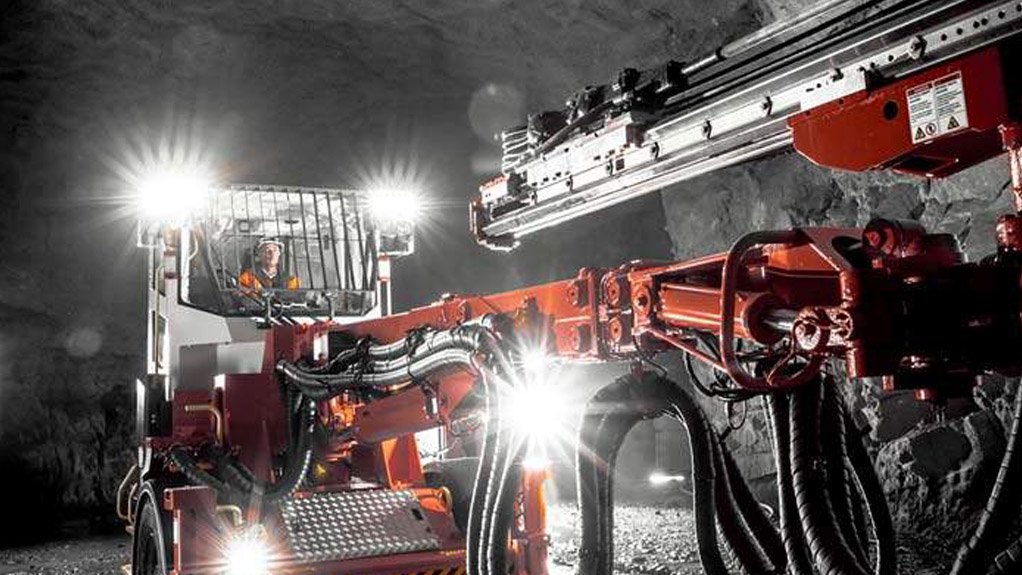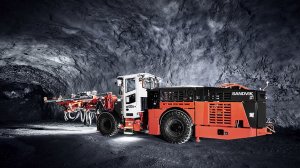Despite the popular belief that the proliferation of mechanised mines in the African mining industry will lead to job losses, mechanised mining does generate new employment opportunities, albeit indirectly through the maintenance, logistics, spare parts transportation, fuel requirements and other supporting services like training, explains mining equipment and services provider Sandvik Mining and Rock Technology business development manager for Southern Africa Andrew Main.
Sandvik is assisting in creating indirect employment opportunities through its manu- facturing facility in South Africa, where it produces load and haul equipment. The facility was launched in September this year and employs 15 people. There will be local indirect supply chain opportunities for this manufacturing facility.
“Yes, fewer people will work on mines, owing to mechanisation, but the employment that remains will be more rewarding and provide higher income-earning opportunities. The increased mechanisation of mines will also place operations in a better position to be sustainable for the longer term, benefiting the communities that surround them through the resultant improved profitability,” he states.
Main points out that the jobs associated with mechanised mining will also require different skill levels. Sandvik has 25 trainers at its Jet Park training facility, in Gauteng, accredited by the Manufacturing, Engineering and Related Services Sector Education and Training Authority.
Sandvik sees training as an essential complementary service offering relevant to the mechanisation drive, as it ensures the sustainability of mechanisation, and therefore offers the full value chain of training both internally and externally.
Main highlights that mining companies across Africa are moving to increase the level of automation and mechanisation of their mines to ensure sustainable, profitable projects. Across the African mining sector, a trend noticed by the company is that mines are focused on the overall efficiencies rather than input costs to yield productivity and a reduction in the overall cost per ton.
“In doing so, they are looking for more innovative solutions from suppliers like us to align with their overall objectives. I have seen a big change in the need for more service-orientated solutions from Sandvik, in terms of consulting on how to improve operations and get the best out of our equipment,” he explains.
To further enhance the optimisation of Sandvik’s mining equipment in use worldwide, the company launched its digital strategy earlier this year aimed at optimising equipment already in the field.
“This digital offering gives our customers access to real-time information on their operations. Data collected from equipment is fed through an information aggregator that produces a customised report, enabling mine operators and owners to make the correct decisions at the correct time.
“Sandvik’s offerings include electric- and battery-driven equipment embracing current and future industry needs, an example being the reduction in and compliance with emissions standards,” Main states, noting that this is just one of the many aspects that influence the company’s response to its customers’ needs.
Main points out that, whether a mine that uses automated mining technology is in a remote and difficult to access area or not, together with its customers, Sandvik agrees on a service level and support strategy that maximises availability.
There are several mines across Africa that use equipment from Sandvik, with greenfield projects showing a propensity towards automation.
“I foresee ongoing initiatives with regard to mine mechanisation, digitalisation and automation. Many of our customers are embracing these technologies and engaging about how to capture all the benefits,” he concludes.
Edited by: Tracy Hancock
Creamer Media Contributing Editor
EMAIL THIS ARTICLE SAVE THIS ARTICLE
ARTICLE ENQUIRY
To subscribe email subscriptions@creamermedia.co.za or click here
To advertise email advertising@creamermedia.co.za or click here















